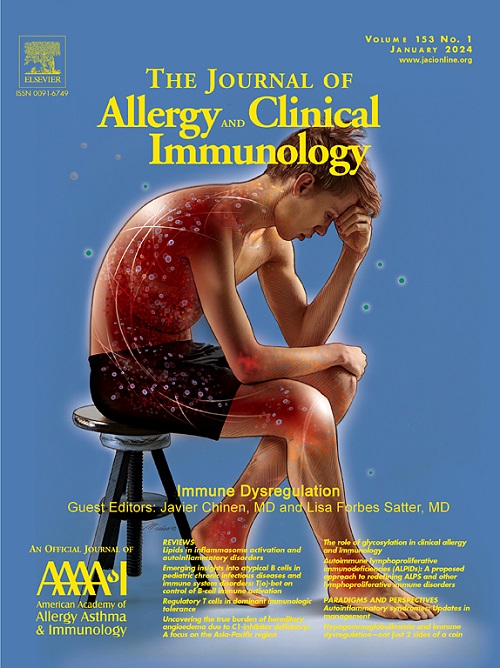儿童 COVID-19:不断发展的流行病学、免疫学、症状、诊断、治疗、COVID 后遗症、预防策略和未来方向。
IF 11.4
1区 医学
Q1 ALLERGY
引用次数: 0
摘要
在整个大流行期间,COVID-19 在儿童中的流行病学发生了变化,最初的低感染率由于出现了传播性更强的 Omicron 变体而显著上升。青少年、少数民族和低收入家庭的儿童以及肥胖儿童感染 SARS-CoV-2 的风险更高。与成人相比,儿童的免疫反应会导致较轻的症状,最常见的是发烧和咳嗽;SARS-CoV-2 变体和年龄不同,症状也不同。确认当前或过去感染的诊断方法包括 RT-PCR、快速抗原检测和血清学。治疗以支持性治疗为主,严重病例可使用抗病毒药物和糖皮质激素。虽然像 MIS-C 和其他后 COVID-19 病症这样的严重病症并不多见,但仍需要谨慎处理。事实证明,接种疫苗可有效减少严重疾病的发生,并防止出现后 COVID-19 病症。持续监测,包括废水监测和普遍或集中检测,对于控制社区传播仍然至关重要。关于再感染或接种疫苗后免疫力的持续时间和质量、合并感染的影响以及不同儿科人群的最佳治疗方案等关键问题仍然存在。本文章由计算机程序翻译,如有差异,请以英文原文为准。
Coronavirus disease 2019 (COVID-19) in children: Evolving epidemiology, immunology, symptoms, diagnostics, treatment, post–COVID-19 conditions, prevention strategies, and future directions
The epidemiology of coronavirus disease 2019 (COVID-19) in children has evolved throughout the pandemic, with initially low infection rates rising significantly as a result of the emergence of the more transmissible Omicron variant. Adolescents, children from ethnic minorities and lower-income households, and those with obesity are at increased risk of contracting severe acute respiratory syndrome coronavirus 2 (SARS-CoV-2) infection. The immune response in children leads to milder symptoms compared to adults, with fever and cough being most frequent; tough symptoms vary by SARS-CoV-2 variant and age. Diagnostic methods to confirm current or past infection include reverse transcription PCR, rapid antigen tests, and serology. Treatment is mainly supportive, with antivirals and glucocorticoids reserved for severe cases. While serious conditions like multisystem inflammatory syndrome in children and other post–COVID-19 conditions are rare, they require careful management. Vaccination has proven effective in reducing severe disease and protecting against post–COVID-19 conditions. Continued surveillance, including wastewater monitoring and universal or pooled testing, remains crucial for controlling community spread. Key questions remain regarding the duration and quality of immunity after reinfection or vaccination, the impact of coinfections, and optimal treatment protocols for different pediatric populations.
求助全文
通过发布文献求助,成功后即可免费获取论文全文。
去求助
来源期刊
CiteScore
25.90
自引率
7.70%
发文量
1302
审稿时长
38 days
期刊介绍:
The Journal of Allergy and Clinical Immunology is a prestigious publication that features groundbreaking research in the fields of Allergy, Asthma, and Immunology. This influential journal publishes high-impact research papers that explore various topics, including asthma, food allergy, allergic rhinitis, atopic dermatitis, primary immune deficiencies, occupational and environmental allergy, and other allergic and immunologic diseases. The articles not only report on clinical trials and mechanistic studies but also provide insights into novel therapies, underlying mechanisms, and important discoveries that contribute to our understanding of these diseases. By sharing this valuable information, the journal aims to enhance the diagnosis and management of patients in the future.

 求助内容:
求助内容: 应助结果提醒方式:
应助结果提醒方式:


